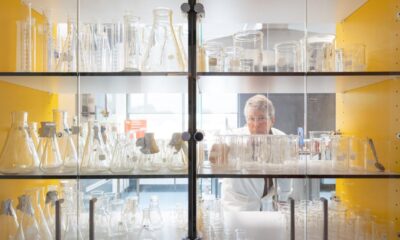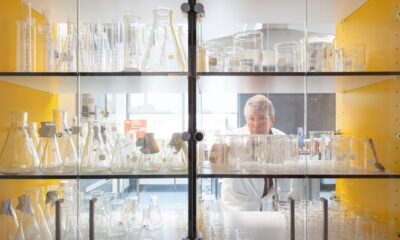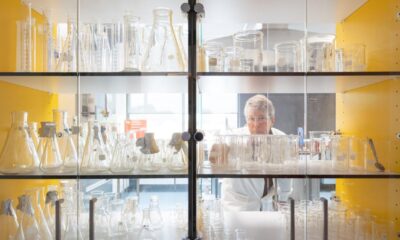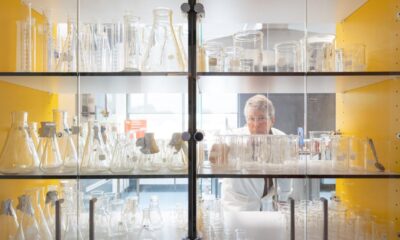Science
Graduate Researcher Unveils Genetic Secrets of Heritage Apples
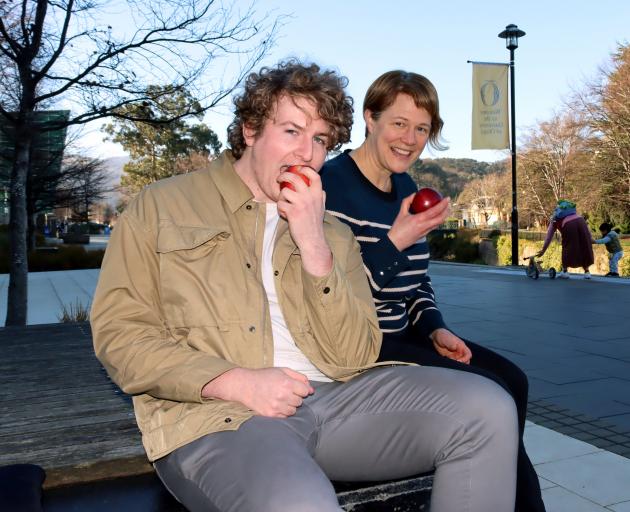
A significant research project is underway at the University of Otago, where Aaron Hewson, a master of science student in plant biotechnology, is analyzing over 300 apple varieties from the Jim Dunckley Heritage Orchard. This orchard, established by the Coastal Otago Branch of the New Zealand Tree Crops Association 25 years ago, is believed to be one of the most diverse collections of apple cultivars in New Zealand. The collection features uniquely named varieties, including Peasgood Nonsuch, Warner’s King, and Albany Beauty.
Hewson’s research aims to assist in the preservation and propagation of these heritage cultivars by providing accurate genetic identification. The apple varieties were originally collected in the 1990s by Jim Dunckley, who sourced them from various locations across Otago and Southland. Many of the specimens originated from an old Plant & Food Research orchard in Clyde. Hewson describes the collection as a “real kind of hodgepodge mix,” highlighting how some trees bear names given by local farmers that reference nearby landmarks. These names often do not correspond with the underlying genetics.
“There is one case where we had a Plant & Food apple called Granny Smith, the classic one you get in supermarkets, and another one called Lord Lambourne. These two cultivars should be really different, but the samples were saying they were genetically the same. So one of those names has to be wrong,” Hewson explained.
To delve deeper into the genetic composition of these varieties, samples were collected by university students and staff from the Plant Biochemistry Lab. These samples were then freeze-dried, labelled, and sent to a laboratory in France for analysis, with logistical support from Plant & Food Research, now part of the Bioeconomy Science Institute. Hewson acknowledged the invaluable assistance of his co-supervisor, Dr. Elena Lopez-Girona, from Plant & Food Research, stating, “It has been very beneficial to have her expertise.”
The research employs a technique known as genotyping by SNP chip, which checks approximately 50,000 known DNA hotspots in apple leaves to create a genetic fingerprint. This process helps to determine whether two trees are the same variety or different. Given strict biosecurity regulations, importing new apple genetics into New Zealand is challenging. Therefore, the local collection could be essential for enhancing disease resistance and other beneficial traits in future apple breeding.
Hewson pointed out the alarming reality that while there are around 10,000 different apple varieties globally, all commercial varieties derive from just six apples, indicating a remarkably narrow genetic base. This narrowness poses risks to biodiversity and resilience against diseases.
Associate Professor Lynnette Brownfield, another co-supervisor of Hewson, emphasized the importance of identifying the genetic makeup of the orchard. She noted that knowledge of these heritage cultivars could provide breeders with fresh genetic material, including traits for disease resistance, which could widen future breeding options.
The Coastal Otago Branch of the New Zealand Tree Crops Association, which owns the orchard, will determine how to utilize the findings from this research. The goal is to assign unique identifiers to each tree in the collection, enabling better communication with apple breeders, from backyard growers to organizations like Plant & Food Research. This coordination will facilitate the provision of germplasm as needed, contributing to the preservation of New Zealand’s apple heritage for future generations.
Hewson’s work not only contributes to scientific knowledge but also plays a crucial role in conserving New Zealand’s diverse apple heritage, ensuring that these unique cultivars can be preserved and enjoyed for years to come.
-
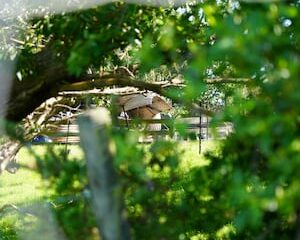
 World1 week ago
World1 week agoPrivate Funeral Held for Dean Field and His Three Children
-

 Top Stories2 weeks ago
Top Stories2 weeks agoFuneral Planned for Field Siblings After Tragic House Fire
-

 Sports3 months ago
Sports3 months agoNetball New Zealand Stands Down Dame Noeline Taurua for Series
-

 Entertainment3 months ago
Entertainment3 months agoTributes Pour In for Lachlan Rofe, Reality Star, Dead at 47
-

 Entertainment2 months ago
Entertainment2 months agoNew ‘Maverick’ Chaser Joins Beat the Chasers Season Finale
-

 Sports3 months ago
Sports3 months agoSilver Ferns Legend Laura Langman Criticizes Team’s Attitude
-

 Sports1 month ago
Sports1 month agoEli Katoa Rushed to Hospital After Sideline Incident During Match
-

 World2 weeks ago
World2 weeks agoInvestigation Underway in Tragic Sanson House Fire Involving Family
-

 Politics2 months ago
Politics2 months agoNetball NZ Calls for Respect Amid Dame Taurua’s Standoff
-

 Top Stories2 weeks ago
Top Stories2 weeks agoShock and Grief Follow Tragic Family Deaths in New Zealand
-

 Entertainment3 months ago
Entertainment3 months agoKhloe Kardashian Embraces Innovative Stem Cell Therapy in Mexico
-

 World4 months ago
World4 months agoPolice Arrest Multiple Individuals During Funeral for Zain Taikato-Fox





